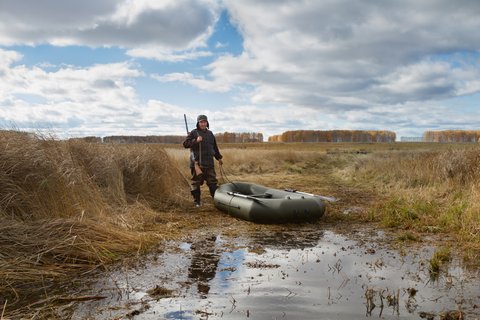Hunting new locations has been a pretty popular one, especially here in California where we have been plagued by drought and warm weather for the last four years.
Many of the spots where I used to be assured of a kill have all but dried up, so to speak. Consequently, I’ve been wandering around in places I have never hunted before. Here’s a few tips on how to make the most of a new location.
If at all possible, try to get out at least a couple of times before you decide to hunt your new spot and do a little scouting. If you know anything about tracking, you should be able to determine the most heavily traveled ground.
Look for spots that have water nearby and ridge crossings and the usual things you would do while scouting. Try to be as invasive and stealth as possible so you don’t spook the game that’s around. Bring a good pair of binoculars and plan on sitting for awhile. Glassing from a distance is a good way to make sure you’re not sensed.
That’s all well and fine if you have the time. Chances are though that the season is dwindling down and you only have certain opportunities to get out hunting. What about the guy who just decides to go to an area he’s seen while passing through? If you have a computer, you’re in luck.
One of the coolest things that’s come along in a long time is Google Earth. With the satellite feature, you can actually take a virtual tour of an area before you go there. If you don’t have time to go out and scout, you can scope the whole area out in your underwear without leaving the house and actually feel like you’ve been there . . . brilliant!
I did this recently on a spot I saw from the road. I had been driving past it for years on the way to my usual hunting spot and always wondered what it looked like. I went home and pulled up the App and I could see the whole area. I even found an easier route to get there than the one I would have taken originally so that saved me time.
A couple things you want to look for when doing this is where the closest watering holes are, food sources, terrain and access. You would look for the same things you would look for if you were there in person. It’s a great tool.
Unfortunately, until your boots hit the ground, you won’t know all the details; so after you become familiar with the area, you’ll want to get there as early as possible. One of the most important things to think about is navigation. It’s easy to get all antsy about a new spot and then a few hours later you have no idea where you are. People get lost all the time doing this.
Awareness is always your best tool. If you have a compass or GPS, map your trail and be sure to take note of landmarks. In the early days I wasted a lot of time trying to find my way back to my truck.
Note the direction of the wind and make sure you are hunting into it. Take a minute to figure out your route and make a back up plan if you get a wind shift. If you’re heading up to a ridge, make sure you think about both directions back if the wind switches. You can look at your map and see where you’ll end up. Make sure to go as slow as possible taking note on tracks. The slower you go, the more apt you are to see tracks coming or going somewhere. This may be a good spot to set up.
The bottom line is to do your homework before you venture into the unknown. Today’s technology makes it easier to make a plan that will make your time out there count. You never know, you might find a hidden gem.
Photo credit: Dreamstime








